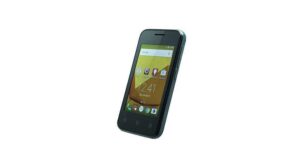The 13th of February is World Radio Day, a day to celebrate all things audio. With that in mind, here’s how to create, record, and publish your own basic podcast – and get people to listen.
What you’ll need
Before you start, make sure you have the following equipment:
- A microphone
- A computer
- Audio editing software (we recommend Audacity for first-time creators)
A high-quality microphone and an easy-to-use editing program will go a long way to making a professional-sounding podcast. Play around with your equipment and get to know how to use it before starting to record.
What makes a good podcast?
Your voice is your best tool when recording a podcast and your speech style is what affects your listeners, either drawing them in or driving them away. People want to feel comfortable when they listen to a podcast, so remember to keep the following in mind.
Speak slowly
It’s tempting to speed through your talk when you’ve prepared ahead of time (or are worried about covering all your selected topics). Talking too fast will make it difficult for your audience to interpret your message.
Keep your volume and speed the same throughout your recording. If you feel like you’re drifting off, take a break and re-record that section. Don’t talk slow and soft one part, then fast and loud in the next. Maintain the same distance from the mic for the entire podcast.
Speak naturally
If you decide to read, be sure to eliminate phrases that look good in writing, but sound awkward when said out loud. Written words are typically more complex than spoken words, so keep your script simple and engaging.
Speak softly
Although podcasts aren’t traditional radio, the connection and closeness that radio brought is still sought. Today’s top podcasts are known for their intimate feel. Listeners will be drawn into a story by a pleasant voice, or excited by a passionate one.
Starting your podcast
Step 1: Find your ideal topic
As more and more people start to record their own podcasts, finding your ideal topic may be your first challenge. But don’t let that discourage you. While just about every topic may be covered, what counts is finding your own unique spin to put on your chosen topic. While it’s true that everything has probably been done before, it hasn’t all been done the way you would do it. So find an angle that’s personally interesting and you’ll be off to a great start.
It’s always a good idea to spend some time listening to what other people are currently doing. Check out our list of the best tech podcasts for some ideas.
Step 2: Record and edit your podcast in Audacity
While there are a number of different software options for podcast recording, it’s best to start off with something free and easy to use. Audacity is open source, free to use and is available for Windows, OS X and Linux. Before you sit down to record, remember to do a quick trial run, to make sure your microphone is connected and the volume is at an acceptable level. From there on it’s just a case of hitting record when you want to start, and hitting the stop button once you’re finished.
Now it’s time to play back your recording and start the editing process. A podcast that’s too short may not feel like it’s done enough work to cover the topic at hand, while a podcast that’s too long may lose the interest of the listener, resulting in them closing it halfway through.
Step 3: Find your theme music
If you’re musically inclined then writing and performing your own theme tune may be just up your alley. For everyone else, the simplest and best solution is to source some free tunes from places like the Free Music Archive and YouTube’s Audio Library. Browse the music there by genre or via search and find a track that you like and download it. It might take a while to find exactly what you want, but when you do, all you have to do is credit the creator in your podcast description.
Step 4: Find somewhere to host your podcast
Once your podcast is recorded and ready to be heard, then you need to find somewhere to host it online. Getting it hosted is essential so you can start distributing your show to podcast directories and apps. Here are some of the best options for hosting:
SoundCloud – SoundCloud offers free podcast hosting (in addition to two competitive paid options for when you get a little more serious), and lets you distribute your podcast via RSS. Your podcasts can also instantly publish to SoundCloud itself, which makes it really easy to share your podcast on social media.
Podbean – Podbean provides multiple tiers of hosting, including a free option (though the free hosting is fairly limited). The service has its own iOS and Android app for listening, as well as analytic tools, though you’ll need to pay to get most of their best features.
Amazon S3 – Amazon’s hosting service offers a free plan, but limits your storage among other things. The paid service only charges you for the storage and bandwidth you actually use, meaning the cost can go up as your podcast grows in popularity.
It’s always best to try out one of the free site to see if you like the way they work before moving onto a paid plan, which will give you more options for distribution.
Photo by Aaron Burden on Unsplash




